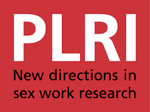Previous research has linked alcohol use with an increased number of sexual partners, inconsistent condom use and a raised incidence of sexually transmitted infections (STIs).
However, alcohol measures have been poorly standardised, with many ill-suited to eliciting, with adequate precision, the relationship between alcohol use and sexual risk behaviour. This study investigates which alcohol indicator – single-item measures of frequency and patterns of drinking ( > = 6 drinks on 1 occasion), or the Alcohol Use Disorders Identification Test (AUDIT) – can detect associations between alcohol use and unsafe sexual behaviour among male sex workers.
Methods: A cross-sectional survey in 2008 recruited male sex workers who sell sex to men from 65 venues in Mombasa district, Kenya, similar to a 2006 survey. Information was collected on socio-demographics, substance use, sexual behaviour, violence and STI symptoms. Multivariate models examined associations between the three measures of alcohol use and condom use, sexual violence, and penile or anal discharge.
Conclusions: Male sex workers have high levels of hazardous and harmful drinking, and require alcohol-reduction interventions. Compared with indicators of drinking frequency or pattern, the AUDIT measure has stronger associations with inconsistent condom use, STI symptoms and sexual violence. Increased use of the AUDIT tool in future studies may assist in delineating with greater precision the explanatory mechanisms which link alcohol use, drinking contexts, sexual behaviours and HIV transmission.
(edited author abstract)
Author:
Stanley Luchters, Scott Geibel, Masila Syengo, Daniel Lango, Nzioki King’ola, Marleen Temmerman, Matthew F Chersich

